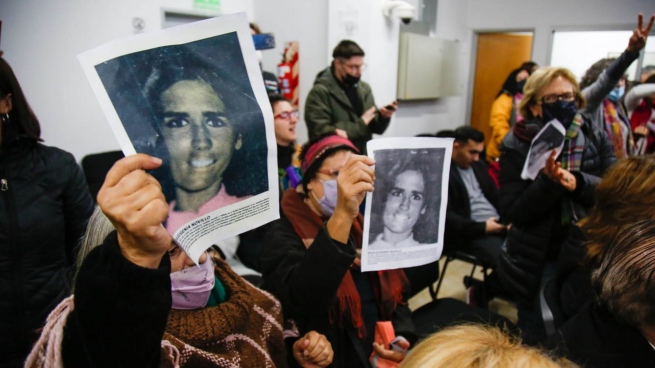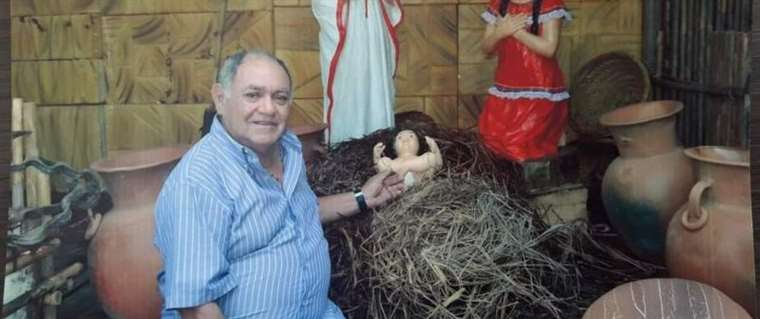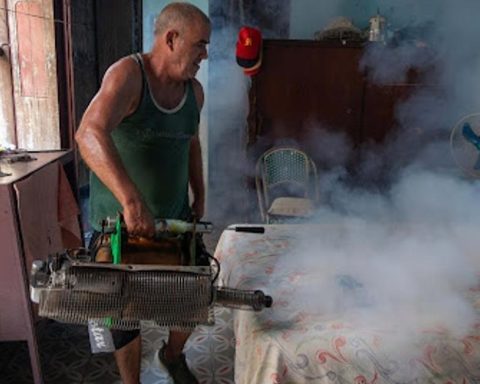The Justice sentenced this Monday to life imprisonment to serve four ex-soldiers from the Army in a common prison for the so-called “flights of death” of the last civic-military dictatorship, operations that consisted of throwing the detained-disappeared into the sea alive and drugged that were in clandestine centers, such as those that operated in the former Navy Mechanics School (ESMA), the largest in the country, or in Campo de Mayo.
The sentence was issued by the Federal Oral Court (TOF) 2 of San Martín against the former head of Military Institutes of Campo de Mayo Santiago Omar Riveros; former battalion commander Luis del Valle Arce; the second of him, Delsis Angel Malacalzaand the former operations officer of that unit Eduardo Maria Lance.
The judges Walter Venditti, Esteban Rodríguez Eggers and Matías Mancini They ordered an analysis of the state of health of the convicts -who are serving house arrest- to determine if they are in a position to go to a common prison to serve their sentence, as requested by the Prosecutor’s Office.
In 2017, the Justice had sentenced some thirty defendants for the “death flights”, several of them to life, among which the former captains stood out Alfredo Astiz and Jorge “El Tigre” Acosta.
The trial for this “mega-cause” lasted five years and around 800 witnesses went through the debate.
Life imprisonment and common jail for 4 ex-soldiers for the “Flights of Death” in Campo de Mayo: officers from Aviation Battalion 601 Luis Del Valle Arce, Eduardo Lance and Ángel Delcis Malacalza and Santiago Omar Riveros were sentenced. The @SDHArgentina was complainant. pic.twitter.com/psNfTGqt48
— Human Rights Secretariat (@SDHArgentina) July 4, 2022
In the San Martín trial, the flights perpetrated by the Army were debated. The prosecutor Marcelo Garcia Berro said that the defendants they committed illegal deprivation of liberty aggravated by mediating violence or threats, imposition of torture aggravated for having been committed to the detriment of political persecution repeatedly, doubly aggravated homicide for its commission with treachery and with the premeditated concurrence of two or more people.
The cases addressed by the TOF were those of Rosa Eugenia Novillo Corvalán, Roberto Ramón Arancibia, Adrián Enrique Accrescimbeni and Juan Carlos Rosace.
These people were kidnapped between 1976 and 1977, transferred to the clandestine detention center “El Campito”, in Campo de Mayo and there they tortured. Finally the they boarded planes and threw them into the sea or the Río de la Plata.
The bodies of these victims appeared in the area of Punta Indio, about 150 kilometers from the city of Buenos Aires, or on the Atlantic coast.
From the Secretariat of Human Rights, plaintiff in the case, they highlighted that thanks to the testimonies of ex-conscripts, who recounted what they saw in Campo de Mayo between 1976 and 1977, it was possible to prove during the debate the operation of “this planned and systematic machinery that was used to disappear and eliminate thousands of people”.
TOF 2 of San Martín found the ex-military guilty of the illegal search and kidnapping, torture and homicide.
In the meantime, the court requested the Ministry of Justice to incorporate them into the electronic surveillance program and to provide them with the relevant geolocation devices.

In the specific case of Riveros, who has already accumulated 16 life sentences for his vast power of influence over everything that happened in Campo de Mayo, he is on conditional release, not yet effective, since he is still at the disposal of a court in Commodore Py.
Meanwhile, the court ordered that the reading of the grounds of the verdict be carried out on September 12.
Human rights authorities highlighted the sentence
The Secretary of Human Rights of the Nation, Horacio Pietragalla Cortiattended the closing of the trial accompanying the relatives of the victims and celebrated the convictions in a ruling that marks a before and after by recognizing the existence of the “flights of death” also in Campo de Mayo, as part of a modus operandi executed by the Army for the extermination of thousands of people.
In addition, the court instructed the judge of first instance Alicia Vence to delve into the investigation of those who were pilots and co-pilots of the “flights of death.”
Today I was present at the closing of the trial for the “Flights of Death” case in Campo de Mayo to accompany the families of the victims. pic.twitter.com/vsi0vffWTY
– Horacio Pietragalla Corti (@pietragallahora) July 4, 2022
From his Twitter account, the head of the Human Rights portfolio highlighted, among other aspects, the fact that the court has referred “testimonies to Grupo Clarín to adapt a note published on November 24, 1977 entitled ‘They are looking for relatives of two abandoned children’ about the kidnapping and disappearance of Arancibia“.
In this way, he made reference to the newspaper article published by the newspaper Clarín in which it was stated that on May 11, 1977, the two young children of Arancibia and his partner María Eugenia Zago had been found “lost” or “alone”.
For his part, the Undersecretary for Human Rights in Buenos Aires, Matthias Morenohighlighted that “Our country is an example of how to process the recent traumatic past based on the policies of Memory, Truth and Justice”.
“From the Undersecretariat we were plaintiffs in the trial and we accompanied the families of the victims and we celebrate that the Court, in addition, has ordered the preparation of updated reports from the Forensic Medical Corps of the National Justice with the aim of establishing the state of health of Delsis Malacalza, Luis del Valle Arce and Eduardo Lance and establish whether they can serve their sentence in a penitentiary unit,” Moreno said.
“It is a very important sentence” because it is “the first sentence on death flights of the Army, the force that most used planes for the extermination of militants”Pablo Llonto, plaintiff attorney
While, Pablo Llonto, the plaintiff attorney in the case and who has been working with CELS (Center for Legal and Social Studies) since 1985, stated in a dialogue with Télam that “it is a very important sentence”, because it is “the first sentence on death flights by the Army, the force that used the most planes for the extermination of militants”, detained in Campo de Mayo.
Llonto highlighted the statements of the “excolimbas” who “made an impressive contribution” and helped to form a “factual platform, a base for the reconstruction of the facts.”
In addition, he opened the door to the possibility that with this ruling “the pilots and co-pilots of the flights that carried out this terrible massacre can be investigated.”
The trial began on October 5, 2020 and judged the acts committed at the Campo de Mayo Aviation Battalion 601 Aerodrome, which was one of the places where the last link in the repressive circuit deployed by the Armed Forces and security between 1976 and 1983.

During the trial, one of the defendants in the case, the former Army aviator Horace Alberto Conditiwas left out due to supervening disability.
During the debate, which lasted eight months, 199 people gave testimony and from most of the statements it emerged that the detainees were entered the premises in unofficial vehicles, driven by people dressed in civilian clothes who went directly to the head from the runway where parked planes were waiting for them.
Witnesses reported that these vehicles transported bags with corpses and bloodied youths with signs of having been subjected to long captivity.


















